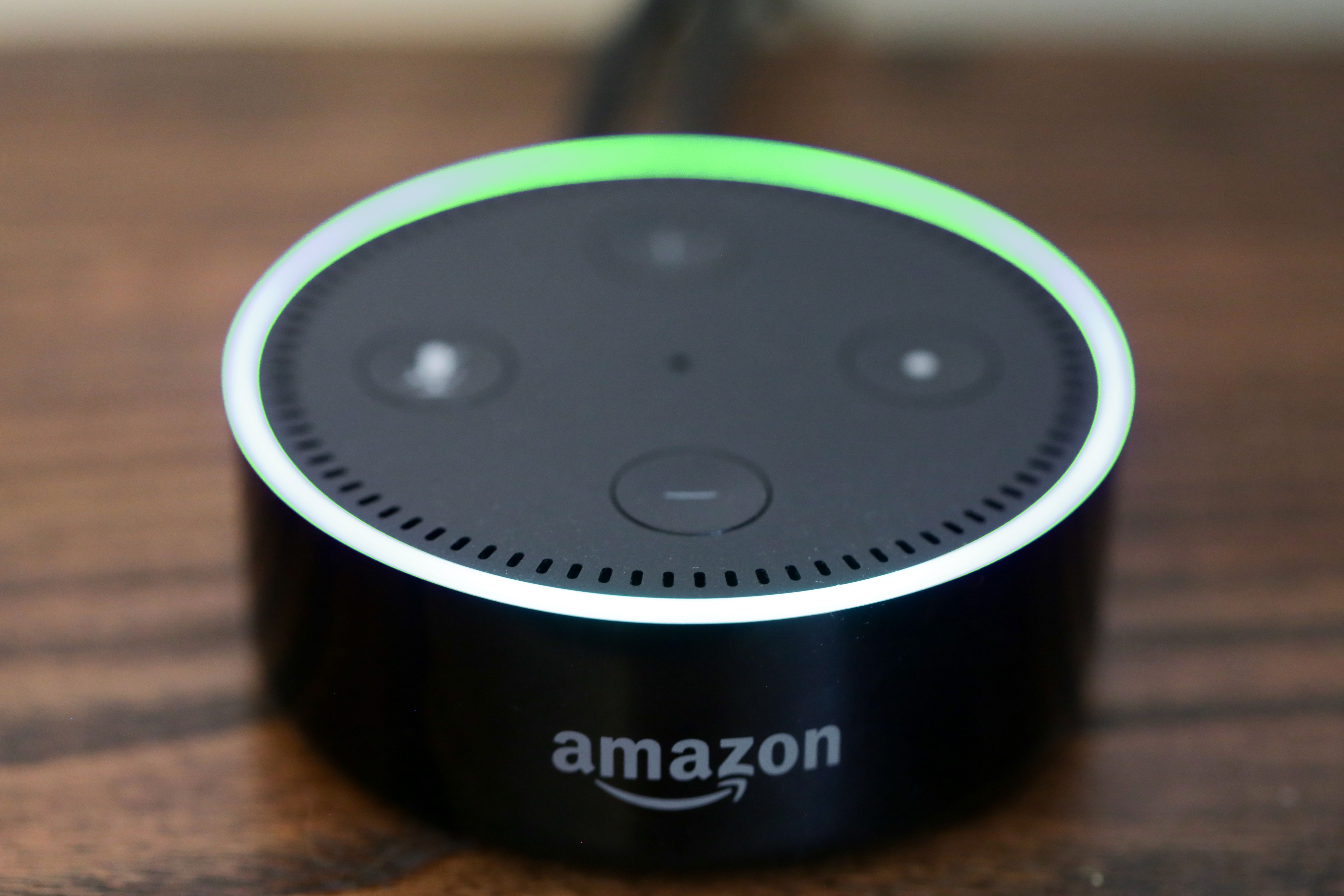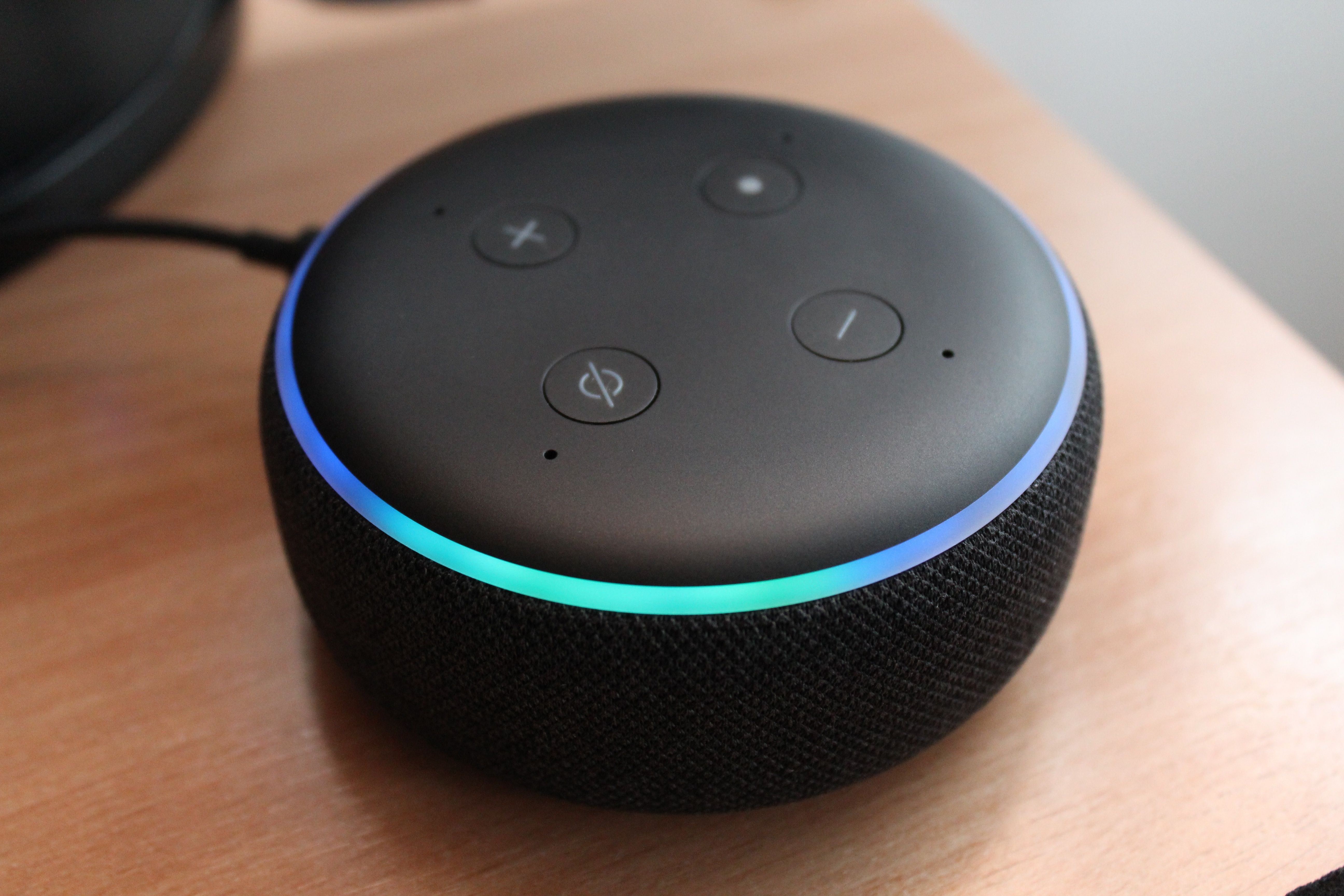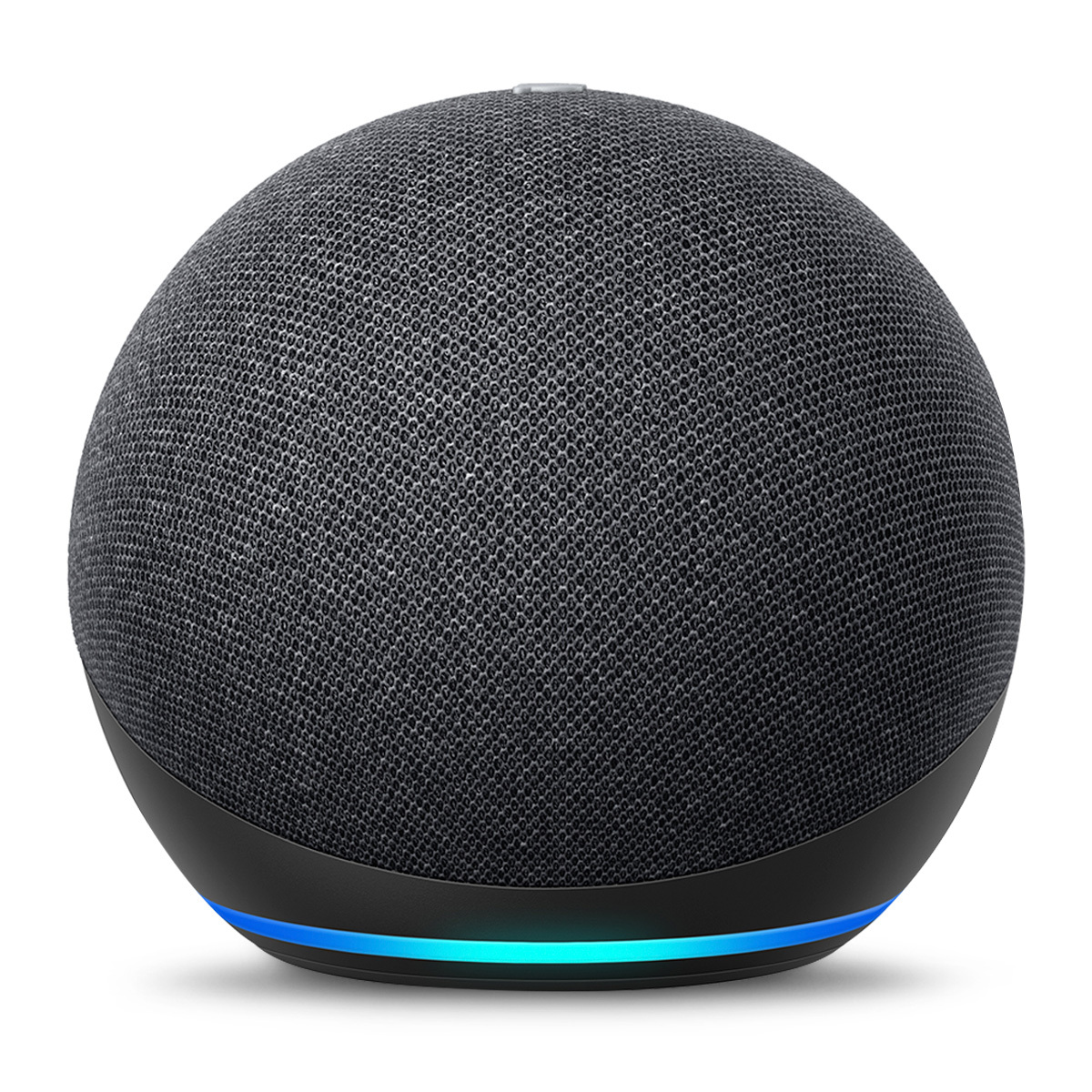Alexa Blair Robertson: Connecting Smart Tech To The Heart Of Innovation
Detail Author:
- Name : Mrs. Greta Kunde
- Username : zelda35
- Email : runolfsdottir.landen@yahoo.com
- Birthdate : 2006-12-06
- Address : 83429 Fahey Mill North Cindystad, LA 39222
- Phone : +1-360-890-6365
- Company : Emmerich, Bartoletti and Davis
- Job : Construction
- Bio : Saepe maiores ut dolor natus ducimus. Sapiente culpa beatae ut eos dolores eos molestiae. Exercitationem doloremque et et.
Socials
linkedin:
- url : https://linkedin.com/in/shannon3125
- username : shannon3125
- bio : Et numquam sed sint delectus.
- followers : 6160
- following : 907
tiktok:
- url : https://tiktok.com/@hoegers
- username : hoegers
- bio : Quos dolor sit dicta quaerat pariatur et itaque. Dolorem vel quas enim est.
- followers : 2418
- following : 2268
facebook:
- url : https://facebook.com/shannon.hoeger
- username : shannon.hoeger
- bio : Veniam commodi qui esse quisquam id. Ut doloribus inventore quisquam qui.
- followers : 6297
- following : 2466
twitter:
- url : https://twitter.com/shannon1971
- username : shannon1971
- bio : Nobis eveniet quia nostrum et facere et. Consequuntur repudiandae reprehenderit non perferendis est qui. Optio aperiam excepturi modi aut sint sint aut rerum.
- followers : 4441
- following : 562
instagram:
- url : https://instagram.com/shannon_hoeger
- username : shannon_hoeger
- bio : Ut non atque eos ducimus eos maiores totam. Est in in minus et molestias ad rerum.
- followers : 895
- following : 1155
Have you ever stopped to think about the invisible threads that connect our everyday smart devices to the deepest levels of scientific discovery? It’s a fascinating thought, really. We often just use our gadgets, like your smart speaker, without much thought for the incredible work that makes them possible. Yet, there’s a whole universe of research and development happening behind the scenes, shaping the way we interact with technology every single day.
Consider, for a moment, how seamless it feels to just say, "Alexa, play some music," and have it happen. That simple command, as a matter of fact, relies on a complex chain of events, from voice recognition software to the tiny, intricate components inside the device itself. Each piece, every little bit, needs specialized materials and very careful processing to work just right, you know?
This brings us to a compelling concept: Alexa Blair Robertson. While not a singular individual in the traditional sense, this name serves as a wonderful way to think about the vital link between user-friendly smart home technology and the foundational materials science that underpins it all. It’s a way to imagine the bridge between saying "scan QR code with your phone's camera to open the Alexa app" and the highly specialized journals discussing "materials science in semiconductor processing." So, let's explore this interesting connection.
Table of Contents
- The Concept of Alexa Blair Robertson: A Visionary Bridge
- Conceptual Profile of Alexa Blair Robertson
- The Alexa Experience: Everyday Innovation
- Semiconductors: The Silent Heroes
- Materials Science in Semiconductor Processing: The Bedrock
- The Future: Where These Worlds Meet
- Frequently Asked Questions About This Interconnection
- Final Thoughts on Alexa Blair Robertson
The Concept of Alexa Blair Robertson: A Visionary Bridge
When we talk about Alexa Blair Robertson, we're not pinpointing a single person, but rather celebrating the spirit of interdisciplinary innovation. This name, in a way, embodies the collective effort and brilliant minds that connect the user-facing simplicity of smart assistants with the deep, complex world of materials science. It's about recognizing that for your Alexa app to work smoothly, and for you to "scan this QR code with your phone's camera to view the Alexa routine," there has to be a robust, unseen foundation of scientific advancement, you know?
Think of it like this: one side of the coin is the intuitive software and user experience that makes smart homes so appealing. The other side, quite frankly, is the painstaking research into materials that conduct electricity just right, or that can be tiny yet powerful enough for our devices. Publishers like Elsevier Ltd, for example, play a big part in sharing this knowledge. It's truly a collaborative dance between the digital and the physical, wouldn't you say?
So, in essence, "Alexa Blair Robertson" represents the ideal innovator who understands both the consumer's need for straightforward, helpful technology and the scientist's dedication to pushing the boundaries of what materials can do. It's about bridging the gap between "install app, make sure you have the Alexa app installed on your phone" and the detailed discussions found in academic papers about "Materials Science in Semiconductor Processing." This conceptual figure helps us appreciate the full scope of modern tech development, which is pretty cool, honestly.
Conceptual Profile of Alexa Blair Robertson
To give some shape to this idea of "Alexa Blair Robertson," we can imagine a conceptual profile that highlights the key areas of expertise and interest that such a figure would possess. This isn't about a real person, remember, but about the *idea* of someone who connects these vital fields. It helps us visualize the kind of thinking that goes into bringing advanced technology to our homes, which is rather interesting, too.
| Conceptual Attribute | Description & Connection |
| Primary Focus | Bridging Human-Computer Interaction (HCI) with Advanced Materials Engineering for Smart Systems. |
| Areas of Interest | Smart home ecosystems, voice AI, semiconductor physics, novel material synthesis, device miniaturization, sustainable tech solutions. |
| Key Publications/Contributions (Conceptual) | Theoretical papers on AI-driven material discovery; practical guides on optimizing smart device performance through material selection; articles in journals like Materials Science in Semiconductor Processing. |
| Impact | Drives innovation that makes smart technology more efficient, reliable, and accessible by focusing on the core material science challenges. |
| Guiding Principle | The belief that user experience is deeply tied to the underlying physical components and their scientific foundation. |
This conceptual profile helps us see how the name "Alexa Blair Robertson" can represent a holistic approach to technology. It’s not just about the software, and it’s not just about the hardware; it’s about how they fit together, perfectly, to create something truly useful. It’s a bit like seeing the whole picture, isn't it?
The Alexa Experience: Everyday Innovation
The Alexa app, as you know, has become a pretty common part of many homes. You can "scan QR code with your phone's camera to open the Alexa app," and then you're off to the races, setting up routines, playing music, or checking the weather. It’s all about making things simpler, more connected, and more responsive to your voice. This user-friendly front end is what most people see and interact with daily, so.
The ease of use, like when you "install app, make sure you have the Alexa app installed on your phone," hides a lot of very clever engineering. From natural language processing that understands your commands to the cloud computing that processes them, every step needs robust systems. The ability to "scan this QR code with your phone's camera to view the Alexa routine" also shows how physical and digital worlds are merging for easier setup, which is rather neat.
The constant updates and new features, like more complex routines or device integrations, show a commitment to continuous improvement. This is where the "Alexa" part of our conceptual name truly shines. It highlights the focus on the end-user, the practical applications, and the constant drive to make smart living more intuitive. It’s about the tangible benefits we all get from these systems, and that's something we often take for granted, honestly.
Semiconductors: The Silent Heroes
Now, let’s shift our focus to the "Robertson" part of our conceptual name, which draws heavily from the world of semiconductors. These aren't things you typically see or interact with directly, but they are absolutely everywhere. Every single smart device, from your phone to your Alexa speaker, relies on semiconductor materials to function. They are the tiny engines that make modern electronics possible, you know?
Semiconductors are materials that can control the flow of electricity under different conditions. This unique property allows them to act as switches, amplifiers, and memory cells, which are the fundamental building blocks of all digital circuits. Without them, our smart devices would be clunky, inefficient, or simply wouldn't work at all. It's quite a big deal, actually.
The ongoing research in this field is critical. Scientists and engineers are constantly looking for new materials, better ways to process them, and methods to make components even smaller and more powerful. This continuous push is what allows our devices to shrink while their capabilities grow. It’s a foundational area of science that rarely gets the spotlight, yet it enables all the tech we love, and that's pretty amazing.
Materials Science in Semiconductor Processing: The Bedrock
The phrase "Materials Science in Semiconductor Processing" comes directly from a very important academic journal, Materials Science in Semiconductor Processing, which is published by Elsevier Ltd. This journal, as a matter of fact, is a key forum for discussing cutting-edge research in this field. It focuses on the functional materials and devices used in various applications, including electronics, sensors, and even green energy, so.
This publication, with its ISSN 1369-8001, has been around since 1998. It covers topics from novel processing techniques to theoretical studies of materials. When you see discussions about its Impact Factor (IF) or its JCR and Chinese Academy of Sciences (CAS) journal分区, you’re looking at how influential and respected the research published within it is. It's a way for academics to share their latest findings, which is truly vital for progress.
The journal's scope is quite broad, covering everything from the fundamental properties of materials to how they behave during processing for device creation. For instance, it discusses "semiconductor materials science" and aims to provide a place for exchanging ideas. This kind of deep, specialized knowledge is what makes it possible for companies to create the tiny, powerful chips inside your Alexa device. It's the very bedrock of technological advancement, honestly.
The constant publication of new research, like the "刊文量" (number of articles published) tracked by Web of Science, shows a lively and active research community. This ongoing work, often highly technical and detailed, is what ensures that the "Alexa" side of things can keep getting better and better. It's a testament to the dedication of countless researchers worldwide, and that's something to appreciate, too.
The Future: Where These Worlds Meet
So, where does the concept of Alexa Blair Robertson lead us in thinking about the future? It points to a world where the lines between user experience design and fundamental materials science become even more blurred. As AI becomes more sophisticated, it might even assist in the discovery of new semiconductor materials or processing techniques. Imagine AI helping design the very chips it runs on, which is pretty wild, isn't it?
The demand for more powerful, energy-efficient, and sustainable smart devices will continue to drive innovation in semiconductor processing. This means the research published in journals like Materials Science in Semiconductor Processing will become even more relevant to the everyday consumer experience. The advancements there will directly influence how responsive your smart speaker is or how long its battery lasts, you know?
Furthermore, as smart home technology becomes more integrated into our lives, the need for robust and reliable hardware becomes paramount. This requires a deep understanding of how materials behave under various conditions, something that materials scientists excel at. The future of smart tech, arguably, rests as much on breakthroughs in the lab as it does on clever software updates, which is a rather important point.
Frequently Asked Questions About This Interconnection
People often have questions about how these different aspects of technology fit together. Here are a few common thoughts that might come up:
How does the Alexa app relate to semiconductor materials?
Well, the Alexa app, which you use to "scan QR code with your phone's camera to open the Alexa app," is software. But that software needs hardware to run on. That hardware, whether it's your phone or an Alexa smart speaker, contains tiny chips made from semiconductor materials. These materials are like the very foundation for the app's functions, allowing it to process your voice and commands, you see?
Why is Materials Science in Semiconductor Processing so important for everyday gadgets?
It's important because this field focuses on making the components that power your gadgets better. Researchers in this area, whose work often appears in journals like Materials Science in Semiconductor Processing, find ways to make chips smaller, faster, and more energy-efficient. This directly translates to your devices being more powerful, lasting longer on a charge, and doing more cool things, which is pretty neat.
Could AI, like Alexa, help advance semiconductor research?
That's a really interesting question! Absolutely, AI could potentially play a huge role. AI could analyze vast amounts of data from experiments, predict properties of new materials, or even help design more efficient manufacturing processes for semiconductors. So, in a way, the "Alexa" side of things could actively contribute to the "Robertson" side, creating a powerful feedback loop for innovation, you know?
Final Thoughts on Alexa Blair Robertson
The conceptual figure of Alexa Blair Robertson helps us appreciate the full spectrum of innovation that brings advanced technology into our homes. It reminds us that behind every simple voice command or seamless routine in the Alexa app, there are years of dedicated research in fields like materials science and semiconductor processing. It's a constant dance between the user interface and the underlying physics, honestly.
Understanding this connection gives us a richer appreciation for the devices we use daily. It highlights the incredible effort that goes into making technology both powerful and approachable. So, the next time you "get the Alexa app, make sure you have the Alexa app installed on your phone," take a moment to think about the intricate science making it all happen. It's a pretty remarkable story of human ingenuity, wouldn't you say?


